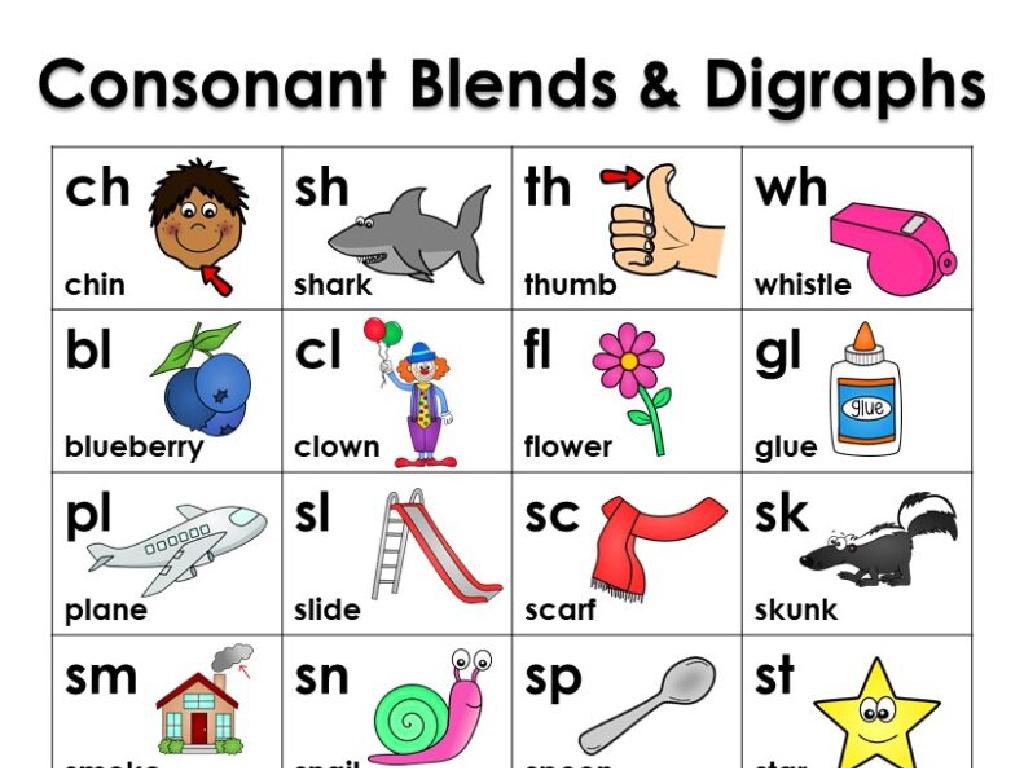Choose Between Adjectives And Adverbs
Subject: Language arts
Grade: Seventh grade
Topic: Adjectives And Adverbs
Please LOG IN to download the presentation. Access is available to registered users only.
View More Content
Introduction to Adjectives and Adverbs
– Define adjectives and adverbs
– Adjectives describe nouns, adverbs modify verbs, adjectives, or other adverbs.
– Their role in sentences
– They add detail and allow for more precise descriptions in communication.
– Impact on sentence meaning
– Adjectives and adverbs can alter the imagery or tone a sentence conveys.
– Literary examples
– Explore how famous authors use these parts of speech to enhance their storytelling.
|
This slide introduces the basic concepts of adjectives and adverbs, aiming to help students understand their function and importance in language. Adjectives provide information about nouns, such as color, size, or quantity, while adverbs modify verbs and can describe how, when, where, or to what extent an action is performed. By examining the impact these parts of speech have on sentence meaning, students can learn to use them to add depth to their writing. Use examples from literature to show how skilled writers use adjectives and adverbs to create vivid imagery and convey emotions effectively. Encourage students to think of their own examples and consider how changing an adjective or adverb in a sentence can change its meaning.
Understanding Adjectives
– Adjectives describe nouns and pronouns
– Answer ‘Which?’, ‘What kind?’, ‘How many?’
– Examples: ‘blue’ sky, ‘seven’ seas
– ‘Blue’ describes the color of the sky, ‘seven’ quantifies the seas, ‘happy’ shows the camper’s mood
– Practice: Identify adjectives in sentences
– Find adjectives in ‘The quick, brown fox jumps over the lazy dog.’
|
This slide introduces adjectives to the students, explaining their role in providing more information about nouns and pronouns. Emphasize that adjectives are used to distinguish things (which one), describe characteristics (what kind), and indicate quantity (how many). Use clear, relatable examples to illustrate the concept. For instance, ‘blue’ tells us the color of the sky, ‘seven’ indicates the number of seas, and ‘happy’ describes the camper’s state of mind. Encourage students to practice by identifying adjectives in sample sentences and in their own writing. This will help them understand how adjectives enhance descriptions and add specificity to language.
Understanding Adverbs
– Adverbs modify verbs, adjectives, and other adverbs
– Adverbs answer ‘How?’, ‘When?’, ‘Where?’, ‘To what extent?’
– Example: ‘quickly’ ran
– Describes running with the quality of speed
– Example: ‘very’ cold, ‘tomorrow’ we will go
– ‘very’ intensifies the adjective ‘cold’, ‘tomorrow’ specifies the time of going
|
This slide introduces the concept of adverbs to the students, explaining their role in a sentence as modifiers of verbs, adjectives, and other adverbs. Emphasize that adverbs provide additional information about how an action is performed, when it happens, where it takes place, and to what extent. Use examples like ‘quickly ran’ to show how adverbs modify verbs, and ‘very cold’ or ‘tomorrow we will go’ to illustrate modification of adjectives and the use of adverbs to indicate time. Encourage students to think of more examples and to identify adverbs in sentences they come across in their reading.
Choosing Between Adjectives and Adverbs
– Adjectives describe nouns
– ‘The colorful parrot’ – ‘colorful’ describes the noun ‘parrot’.
– Adverbs modify verbs, adjectives, and other adverbs
– ‘She quickly ran’ – ‘quickly’ modifies the verb ‘ran’.
– Examples: ‘silent’ room vs. speaks ‘softly’
– Adjective: ‘The test was hard.’ Adverb: ‘He worked hard on the test.’
– Tips to avoid common mistakes
– Don’t use an adverb when you need an adjective and vice versa.
|
This slide aims to help students differentiate between adjectives and adverbs, which is a common area of confusion. Adjectives are used to describe nouns and pronouns, giving more information about an object’s size, shape, age, color, etc. Adverbs typically modify verbs and can describe how, when, where, and to what extent an action is performed. Provide clear examples to illustrate the difference, such as ‘The silent room’ (adjective) versus ‘She speaks softly’ (adverb). Emphasize the importance of using the correct modifier to avoid common mistakes. Encourage students to create sentences using adjectives and adverbs to reinforce their understanding.
Interactive Exploration of Adjectives and Adverbs
– Identify adjectives and adverbs in sentences
– Find describing words and words that modify actions
– Modify sentences with different adjectives/adverbs
– Change ‘quick’ to ‘swift’ or ‘happily’ to ‘joyfully’
– Discuss meaning changes due to modifications
– How does ‘He ran quickly’ differ from ‘He ran swiftly’?
– Engage with examples for better understanding
|
This slide is designed for an interactive class activity. Students will practice identifying adjectives and adverbs within given sentences. Then, they will modify these sentences by changing the adjectives and adverbs, and discuss as a class how these changes affect the meanings of the sentences. This exercise will help students understand the role of adjectives and adverbs in sentence construction and meaning. For the activity, provide sentences and ask students to work in pairs or groups to find and modify the adjectives and adverbs. Possible sentences for practice could include: ‘The sun shone brightly on the calm sea.’ or ‘She sang beautifully in the quiet room.’ Encourage students to be creative with their modifications and to share their new sentences with the class.
Class Activity: Adjective or Adverb?
– Complete the worksheet individually
– Fill in blanks with correct adjectives or adverbs
– Pair up for discussion
– Explain your choices to your partner
– Share your answers with the class
– Class review of worksheet answers
– We’ll correct the worksheet as a class
|
This activity is designed to reinforce the students’ understanding of adjectives and adverbs. Provide a worksheet with sentences where students must decide whether to use an adjective or an adverb in the blank spaces. After completing the worksheet individually, students will pair up to discuss their choices, explaining their reasoning and understanding of the differences between adjectives and adverbs. This peer interaction encourages collaborative learning. Conclude the activity with a class review where answers are discussed and corrected together, ensuring that any misconceptions are addressed. For the teacher: Prepare diverse sentences that clearly demonstrate the use of adjectives and adverbs. Have additional examples ready for students who finish early or require extra practice.
Wrapping Up: Adjectives & Adverbs
– Importance of correct modifiers
– Homework: Craft 10 sentences
– Create sentences using new vocabulary
– Use adjectives and adverbs correctly
– Ensure modifiers accurately describe nouns and verbs
– Study for the upcoming quiz
– Review today’s lesson to prepare
|
As we conclude today’s lesson, remind students of the significance of using adjectives and adverbs correctly to enhance their writing. For homework, they should write ten original sentences, applying what they’ve learned about modifiers. This exercise will help reinforce their understanding and provide practice in distinguishing between adjectives and adverbs. Encourage them to be creative and use a variety of words. Additionally, inform them of the quiz in the next class, urging them to review their notes and the examples discussed today to ensure they are well-prepared.






